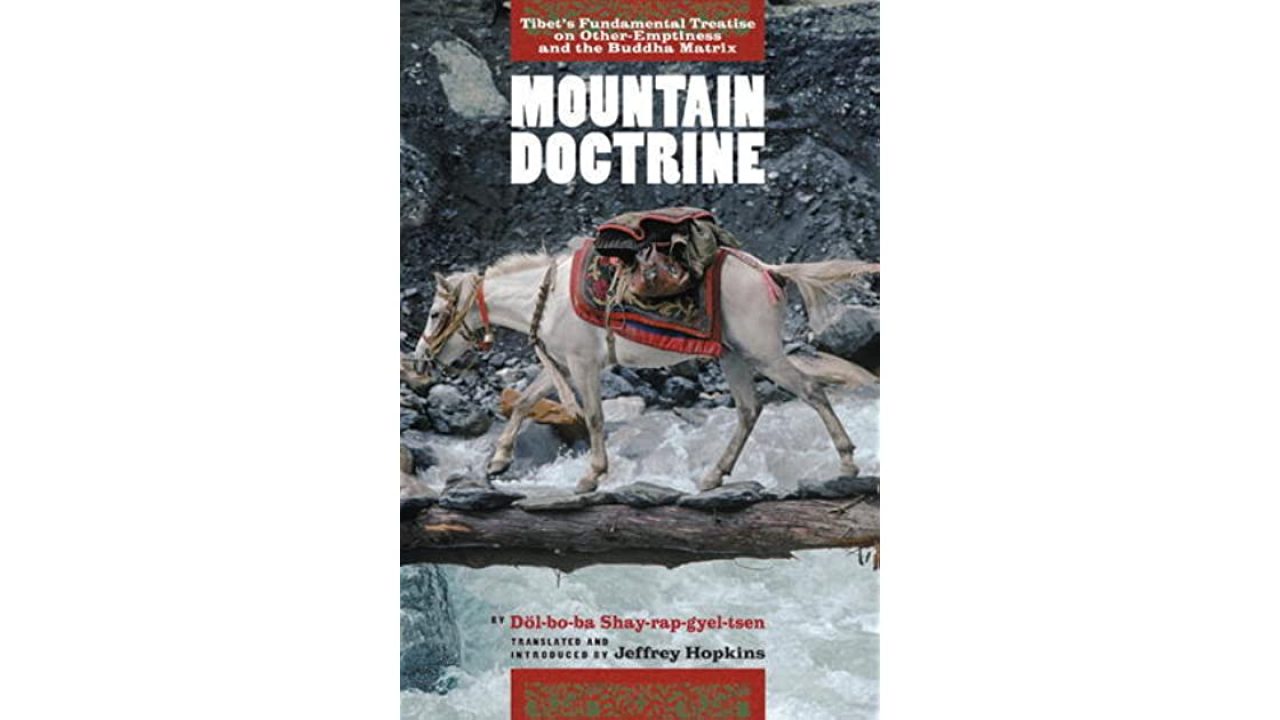Part one
Döl-bo-ba Šhay-rap-gyel-tsen, author of the Mountain Doctrine, Ocean of Definitive Meaning: Final Unique Quintessential Instructions, was one of the most influential figures of fourteenth-century Tibet, a dynamic period of doctrinal formulation. As Cyrus Stearns says in his excellent biography:
Without question, the teachings and writing of Dol po pa, who was also known as “The Buddha from Dol po” (Dol po sangs rgyas), and “The Omniscient One from Dol po who Embodies the Buddhas of the Three Times” (Dus gsum sangs vgas kun mkhyen dol po pa), contain the most controversial and stunning ideas ever presented by a great Tibetan Buddhist master. The controversies which stemmed from his teachings are still very much alive today among Tibetan Buddhists, more than 600 years after Dol po pa’s death. His works were monumental and seminal in that they present a penetrating and controversial re-formulation of doctrines on emptiness and buddha-nature influential through to the present day.
Döl-bo-ba Šhay-rap-gyel-tsen was born in the Döl-bo area of present day Nepal in 1292 in a family practicing tantric rites of the Nying-ma order. It is reported that after receiving tantric initiation at the age of five, he had a vision of Red Mañjushri, and subsequently his intelligence burgeoned. At twelve he was ordained and at seventeen fled, against his parents’ wishes, to study with Gyi-dön Jam-jang-drak-ba-gyel-tsen in Mustang, where in a month he learned the doctrinal vocabulary of the path-structure studies associated with the perfection of wisdom teachings,
epistemology and logic and phenomenology.” His new new teacher wa called to Ša-gya, then the greatest learning center in Tibet, and two years ater Döl-bo-ba joined him, where he continued studies on the three above mentioned topics, as well as Shãntideva’s Engaging in the Bodhisattva Deeds’-simultaneously mastering them in a year and and half.
From this master he also received teachings on the Kalachakara, Tantra nad related Sütras and commentaries that shaped his practice and outlook. After receiving many other teachings, when he was twenty-one, his parents “who had now forgiven him for running away,”” made an offering for own first teaching-this began on the perfection of wisdom, epistemology and logic, phenomenology, and discipline. “His teachings were received with unprecedented acclaim, although some criticised him for teaching too many texts at once.” At the age of twenty-two, while making a tour of western and central Tibet to learn at other institutions, he first came to be called “Omniscient,” an epithet that even his opponents still use. As Stearns says about his extremely broad learning and about the importance of Gyi-dön Jam-ỹang-drak-ba-gyel-tsen to him.
Up until the age of twenty-nine (1321) he had studied with more than thirty teachers, the most important of whom, Skyi ston ‘Jamdbyangs Grags pa rgyal mtshan, had bestowed upon him some: seventy initiations and teachings.
At twenty-nine in 1321, however, he was completely humbled when he vited the monastery of Jo-nang, located 160 km northwest of the Dra-šht-hlün-bo monastery of Shi-ga-dzay, and saw “that every man and woman who was seriously practicing meditation had realised the nature of reality through meditation.
In 1322 he returned to Jo-nang, where he received in-depth instruction
on the Kālachakra Tantra and entered into retreat. During a second retreat
for one year (or two or three, depending on the account), he realised the first four branches of the six-branched yoga of the Kälachakra systen individual withdrawal, concentration, stopping-vitality, retention, subsequent mindfulness and meditative stabilization.
